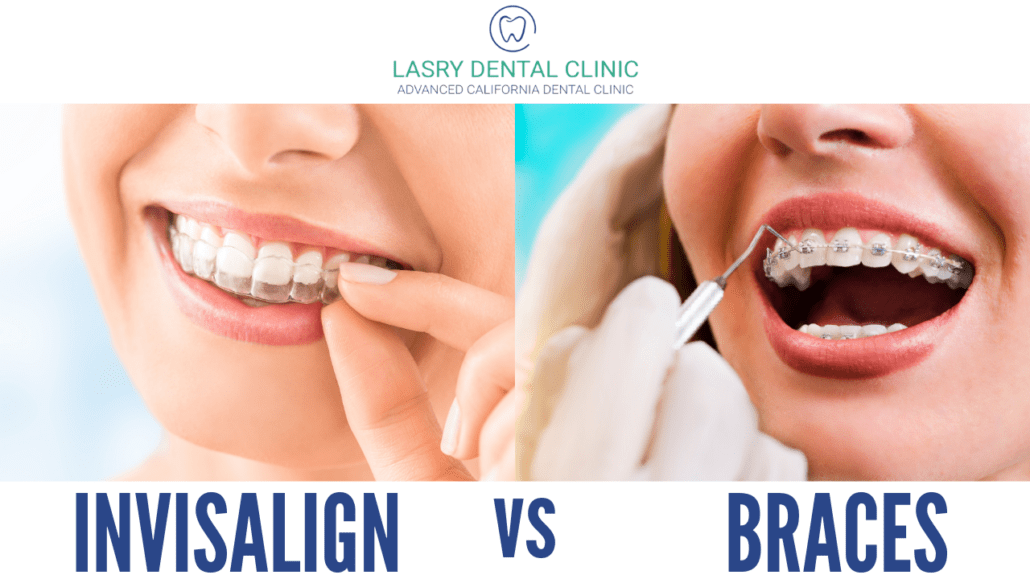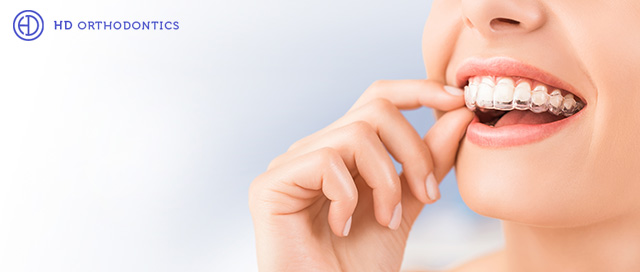Discover the Benefits of Invisalign for a Perfect Smile Improvement
Discover the Benefits of Invisalign for a Perfect Smile Improvement
Blog Article
Invisalign vs. Standard Braces: Which Option Is Right for You?
When considering orthodontic treatment, the selection in between Invisalign and typical dental braces provides numerous essential factors that warrant cautious analysis. Invisalign offers a discreet option with detachable aligners, while typical dental braces supply a more noticeable yet efficient option for serious imbalance. Each option incorporates distinct benefits and drawbacks connected to looks, convenience, treatment period, and cost. Comprehending these subtleties is essential for making an educated choice that lines up with your individual preferences and lifestyle. The inquiry stays: which choice will best satisfy your orthodontic requirements and expectations?
Overview of Therapy Options

On the other hand, standard braces are composed of steel braces and wires that are adhered to the teeth. This technique applies continual stress with time to achieve alignment. While efficient for intricate orthodontic issues, conventional braces require routine gos to for modifications and can posture obstacles in preserving dental health because of the difficulty of cleansing about wires and brackets.
Both choices have their benefits, and the option commonly hinges on particular dental problems, lifestyle choices, and client conformity. Inevitably, seeking advice from an orthodontic expert is essential for figuring out one of the most ideal therapy plan customized to individual requirements. Comprehending the nuances of each choice can dramatically affect the total success of orthodontic therapy.
Aesthetic Factors To Consider
A substantial factor affecting the option between Invisalign and typical braces is the visual charm each therapy provides. Invisalign aligners are crafted from clear plastic, making them basically undetectable when worn.
On the other hand, conventional dental braces contain metal brackets and cords, which can be extra obvious. While innovations in orthodontic technology have led to the development of smaller brackets and tinted elastics, conventional braces still preserve a more conspicuous profile. For some individuals, the exposure of dental braces may prevent them from looking for essential treatment.
Eventually, the choice between Invisalign and traditional dental braces may rest on personal choices regarding aesthetics. Clients who focus on discernment often lean toward Invisalign, while those who are much less concerned about exposure may choose typical dental braces. Understanding the aesthetic effects of each option is critical for making an informed decision that straightens with one's way of life and preferences.
Comfort and Convenience

In regards to comfort, Invisalign aligners are removable, enabling patients to appreciate their favorite foods without constraint and preserve optimal dental hygiene. Brushing and flossing are simplified, as the aligners can be gotten during these routines, whereas standard braces require careful steering around link braces and wires.
In comparison, standard dental braces necessitate regular adjustments, making them less convenient for those with active timetables. Overall, the convenience and benefit of Invisalign make it an enticing option for lots of people looking for orthodontic treatment.
Therapy Period and Efficiency
While both Invisalign and typical dental braces are efficient in correcting oral misalignments, the duration of therapy can vary considerably between the 2 alternatives. Usually, Invisalign therapy can take anywhere from 12 to 18 months, depending upon the intricacy of the situation. The clear aligners work by gradually changing teeth into their desired positions, and normal follow-ups with an orthodontist assistance make certain development stays on course.
In contrast, traditional braces often call for a longer commitment, typically ranging from 18 months to three years. This is due to their fixed nature and the use of cords and braces, which can be extra effective for intricate instances and severe imbalances (Invisalign). The therapy efficiency of conventional dental braces is well-documented, as they permit exact changes and greater control over tooth activity
Inevitably, the option between Invisalign and typical braces might depend upon both the anticipated therapy duration and the certain dental issues available. Consulting with an orthodontist is critical, as they can give customized referrals based upon private demands, guaranteeing the picked method lines up with desired results and durations.
Expense Comparison and Insurance Coverage Options
Price plays a substantial function in the decision-making procedure for individuals thinking about orthodontic treatment, whether choosing Invisalign or traditional dental braces. On average, the expense of Invisalign ranges from $3,000 to $8,000, while standard braces usually cost in between review $2,000 and $6,000. Variables influencing these prices include the intricacy of the situation, the duration of treatment, and geographical place.
Many dental insurance coverage plans provide partial protection for orthodontic treatments, yet the specifics can vary extensively. Usually, conventional braces may be much more often covered by insurance coverage strategies contrasted to Invisalign, which some insurance companies classify as a cosmetic treatment.
In addition, a number of orthodontic methods offer adaptable layaway plan, making both treatment options more easily accessible. Individuals need to ask about potential financing choices and discounts for upfront settlements. Evaluating the overall cost, consisting of insurance policy advantages and settlement strategies, is necessary for making a notified decision that lines up read this with both visual choices and budget factors to consider.

Verdict
In recap, the option in between Invisalign and conventional braces rests on numerous factors, consisting of aesthetic preferences, convenience, treatment duration, and expense. Invisalign supplies a very discreet, removable option that promotes oral hygiene and nutritional versatility, while standard dental braces may be better for intricate dental issues and often come at a reduced rate point. Eventually, appointment with an orthodontist is necessary to evaluate specific scenarios and identify the most suitable therapy choice for attaining ideal dental alignment.
When thinking about orthodontic treatment, the option in between Invisalign and traditional dental braces presents a number of important aspects that warrant careful assessment.Contrasting Invisalign and standard braces exposes distinct therapy alternatives for orthodontic adjustment.While both Invisalign and typical dental braces are efficient in remedying oral misalignments, the period of treatment can differ dramatically between the two alternatives.Expense plays a considerable duty in the decision-making process for individuals considering orthodontic therapy, whether choosing for Invisalign or traditional braces.In summary, the option in between Invisalign and traditional braces pivots on multiple factors, including aesthetic preferences, convenience, treatment duration, and expense.
Report this page